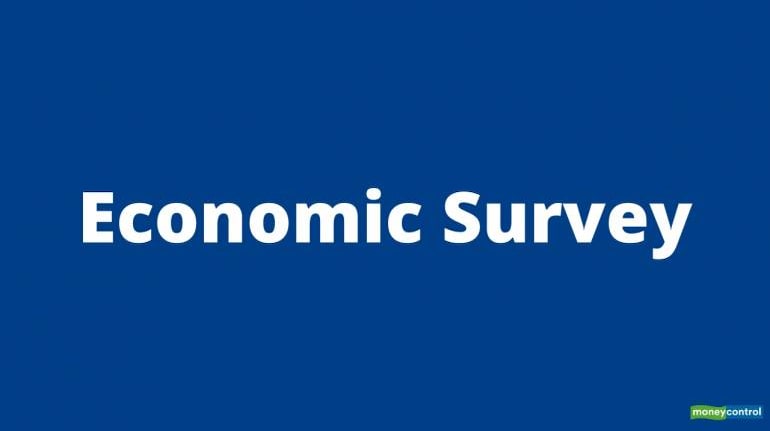



India’s macroeconomic parameters, spanning from growth to debt sustainability, are in sound condition. The economy will now begin to show the full virtuous effect of the reforms that the government has taken over the past years. These are the two points that Chief Economic Advisor V Anantha Nageswaran wants to drive home through the economic survey of 2023.
The survey is rife with hope, stating that India’s growth outlook is better than it was in the pre-pandemic years. Banks are healthy, the digital revolution is making the economy more efficient — a large part of which is now formalised — and financial inclusion is at its peak.
“It is a matter of time before its growth effects become persistent in the data. That is why we are optimistic that India will achieve an average of 6.5 percent real GDP growth in the medium term,” the survey says.
To be sure, the CEA’s hope candle has enough fuel to burn. The surge in credit growth shows that a strong financial system can inspire businesses to borrow and invest, as also push consumption. Private sector capex is showing incipient signs of revival as well. The so-called animal spirits may have not returned but they are unlikely to be snoozing for much longer.
The CEA is also taking help of the counterfactual to show that India’s economy is resilient. The counterfactual is an argument that one makes to arrive at a different conclusion by imagining a situation that panned out differently from what transpired.
In layman’s terms, what could have happened or would have happened instead of what has happened. Here is an example from the survey itself. “The Indian economy could have grown faster in the absence of the financial and corporate sector balance sheet stress,” it said.
The twin balance sheet stress that besieged India’s economy during the fiscal years of FY14 to FY19 had pulled down the pace of economic growth. Gross domestic product (GDP) growth decelerated to 4 percent in FY20 from a healthy 7 percent five years prior.
Errant borrowers and overleveraged companies led India’s lenders down the road of massive capital erosion. What transpired was a crippled banking system unable to meet the credit needs of the economy, along with a private corporate sector unwilling to invest.
The economic survey argues that GDP growth would have been far higher had these events not transpired. The CEA is on point here. But these events did happen and their debilitating impact on the economy shows that India wasn’t resilient after all. Also, this was a homegrown problem rather than a blow from external factors. The blame for the twin balance sheet lies not just with the perpetrators (overzealous corporates that borrowed), but also with policymakers.
Again, the survey says that the economy would have reaped the full effects of the cleaned-up balance sheets had the pandemic not hit and driven up prices of goods across the globe. Nageswaran’s argument is sound but not complete. The Coronavirus pandemic wounded almost every economy by forcing varying degrees of shutdowns of economic activity.
What differentiated economies was the swiftness in recovery, which was down to their resilience before the pandemic and the intensity of fiscal measures. India fared poorly on both, having lost its economic mojo by FY20, which meant that the government couldn’t go all out on measures to tackle the pandemic.
The survey also does a counterfactual exercise on fiscal consolidation. It finds through this exercise that fiscal consolidation is possible even with moderate GDP growth, provided such growth is sustained for a long period.
“India's public debt and deficit ratios went up sharply in recent years, not just on account of higher spending and lower tax revenues due to the pandemic, but also due to the denominator (gross domestic product) economy undershooting trends resulting from financial system stress, followed by the pandemic. With both out of the way, nominal growth should return to its trend path, and hence, fiscal parameters would begin to show improvement,” it said.
The fact of the matter is that GDP growth has been volatile the past few years due to multiple shocks. Economic shocks may seem sudden, but they emerge at regular intervals. The survey itself has noted several shocks to the economy over a span of two decades, shocks that coincided with reforms.
Is the CEA’s optimism misplaced? Not entirely. There is merit in his pitch of stronger economic growth, resilient institutions, and sustained higher growth potential. But there are also challenges and the economic survey falls short of lighting a clear path to handle these.
The survey bats for a reduction in compliance for small businesses, fixing of discoms, and providing impetus to education, among other things. Whether these would fructify before the next shock will determine how narrow the gap would be between the survey’s optimism and the reality that will unfold. For that, #IndiaMustLiveUptoTheHopes.
Discover the latest Business News, Sensex, and Nifty updates. Obtain Personal Finance insights, tax queries, and expert opinions on Moneycontrol or download the Moneycontrol App to stay updated!
Find the best of Al News in one place, specially curated for you every weekend.
Stay on top of the latest tech trends and biggest startup news.